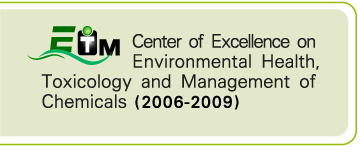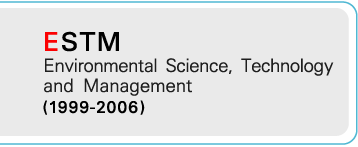|
At present, mining operation is one of major causes of heavy metal pollution in environment. Biological approaches such as using microorganisms in metal biosorption are promising strategies for remediation of metal-contaminated soil and wastewater. In this study, cadmium- and zinc-resistant bacteria were isolated from soils collected from Padaeng zinc mine in Tak province, Thailand. The isolated bacteria were identified as Tsukamurella paurometabola A155, Pseudomonas aeruginosa B237, and Ralstonia Taiwanensis E324 by analysis of partial 16S rDNA gene sequence. The minimal inhibitory concentration (MIC) values of T. paurometabola A155, P. aeruginosa B237, and R. taiwanensis E324 were 3, 8, 5 mM of cadmium, and 22, 19, 19 mM of zinc, respectively. These results indicated that among these three strains, T. paurometabola A155 and P. aeruginosa B237 exhibited the highest to tolerance to zinc and cadmium, respectively. We next examined the ability of these bacteria in accumulation of cadmium and zinc and found that T. paurometabola A155 accumulated the highest levels of cadmium and zinc. Furthermore, we found that cadmium and zinc were mainly adsorbed on the cell walls of these bacteria. These results suggested the potential of these bacteria for using in biosorption of heavy metals to remove them from environment. แหล่งข้อมูล:
|
 Center of Excellence on Environmental Health and Toxicology (EHT)
Center of Excellence on Environmental Health and Toxicology (EHT)










